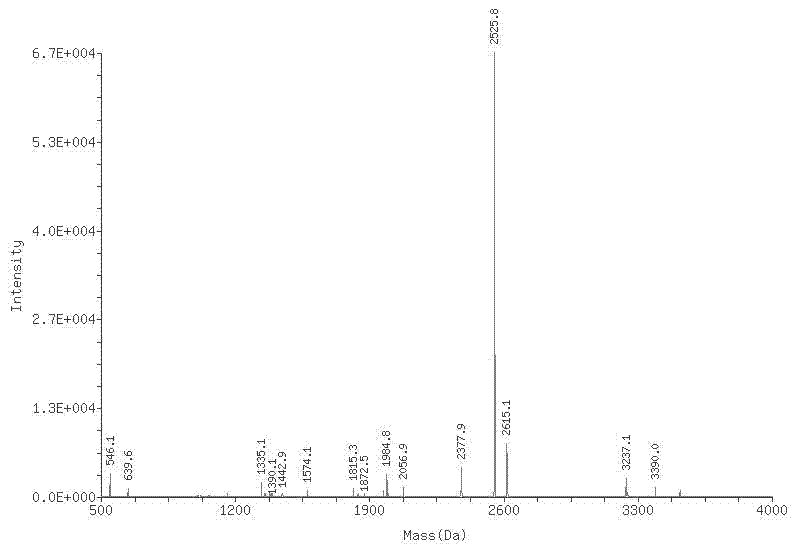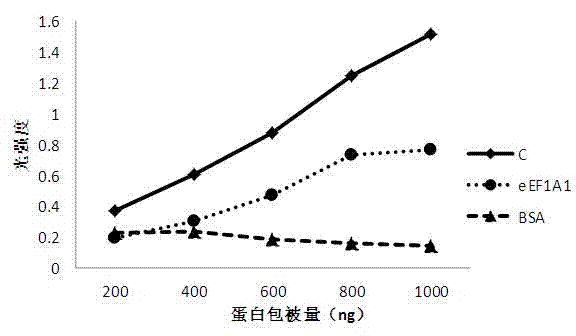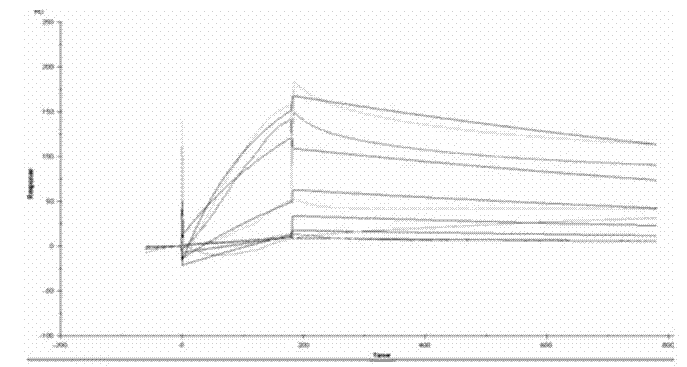Photosensitizer binding protein/polypeptide and application thereof to photodynamic gene therapy
A technology for binding proteins and photosensitizers, which is applied in the field of photosensitizers binding proteins and peptides, and can solve problems such as unclear mechanisms
- Summary
- Abstract
- Description
- Claims
- Application Information
AI Technical Summary
Problems solved by technology
Method used
Image
Examples
Embodiment 1
[0044] PCR amplification of exogenous phage genes
[0045] Using the phage combined with the photosensitizer screened from the human liver cDNA phage display library as described in the patent 2010105533095 as the PCR reaction template, the forward primer T7SelectUP Primer and the reverse primer T7SelectDOWN Primer were used for PCR amplification to obtain T7 Carrier exogenous gene PCR product.
Embodiment 2
[0047] Gene Blast analysis of photosensitizer-bound phage
[0048] 1. After the above-mentioned PCR products were connected with the pMD-19T vector, transform and clone the strain XL1-Blue, pick 5-10 transformants and culture them, and screen the positive transformants by PCR cloning in bacterial solution, send them to Handsome Shanghai Biological Co., Ltd. for sequencing, and analyze the T7Select vector. See SEQ ID NO.1 for the foreign insert sequence.
[0049] 2. The exogenous insertion sequence of the T7Select vector was analyzed by NCBI Blast, and it was confirmed that the 362 bases of the exogenous gene were completely consistent with the 1374-1735 base sequence of the eEF1A1 full-length gene, and the coding gene was 1374-1452, and the inserted sequence was consistent with the vector The fused ORF is consistent with the C-terminal 25aa of the amino acid sequence encoded by an ORF of eEF1a1, and the specific sequence information of 25aa is shown in SEQ ID NO.2.
Embodiment 3
[0051] Obtaining of eEF1A1 Genetic Engineering Protein
[0052] Obtained as described in the patent 201010504169.2, the protein sequence information is shown in SEQ ID NO.3.
PUM
| Property | Measurement | Unit |
|---|---|---|
| molecular weight | aaaaa | aaaaa |
Abstract
Description
Claims
Application Information
 Login to View More
Login to View More - R&D
- Intellectual Property
- Life Sciences
- Materials
- Tech Scout
- Unparalleled Data Quality
- Higher Quality Content
- 60% Fewer Hallucinations
Browse by: Latest US Patents, China's latest patents, Technical Efficacy Thesaurus, Application Domain, Technology Topic, Popular Technical Reports.
© 2025 PatSnap. All rights reserved.Legal|Privacy policy|Modern Slavery Act Transparency Statement|Sitemap|About US| Contact US: help@patsnap.com



